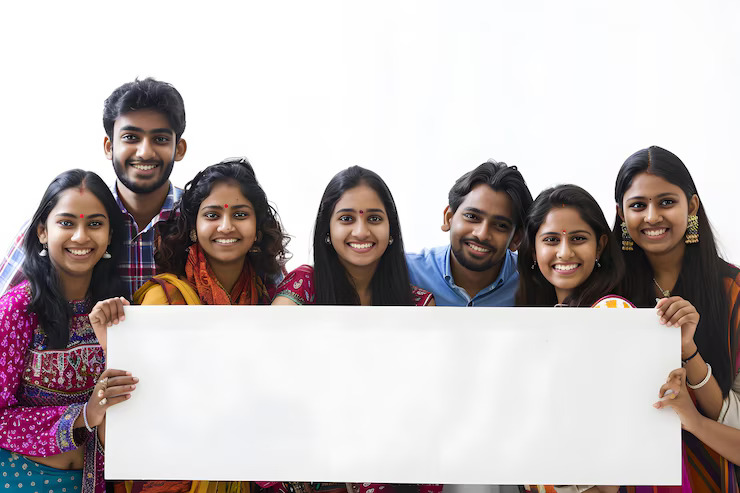India is at a crucial juncture where the issues that traditionally sparked public outrage—religion, caste, and poverty—no longer resonate as powerfully as they once did. This shift in priorities can be largely attributed to the country’s burgeoning youth population. With over 65% of Indians under the age of 35, the younger generation is reshaping the national discourse, focusing more on creation than preservation. Unlike their predecessors, whose actions were often driven by the need to protect existing structures, today’s youth are empowered by the desire to build something new. Their dreams are more potent than their memories, fueling a forward-looking vision for India’s future. However, this generational shift is not being fully harnessed in the nation’s policy-making, which remains predominantly in the hands of an older demographic.
Currently, Indian policy-making is largely controlled by a group of older individuals and entities who mask their self-serving interests as national priorities. This includes a wide array of actors: land mafias who exploit legal loopholes, education entrepreneurs focused more on profit than quality, road contractors whose projects are mired in inefficiency and corruption, small retailers clinging to outdated business models, trade unions resisting necessary labour reforms, state electricity employees blocking privatization efforts, secretaries eyeing lucrative post-retirement appointments, politicians who excel in manipulation rather than governance, and crony capitalists who benefit from their close ties with those in power. These groups represent significant obstacles to progress, creating what can be described as ‘blood clots’ in the body of India’s development. Confronting these entrenched interests requires both courage and imagination, two qualities that are often in short supply among those currently holding the reins of power.
This situation is not unique to India. For example, Japan, an ageing society, faces similar challenges. The country is currently grappling with deflation and a strong yen, the latter of which recently hit its highest level since World War II. These economic conditions are having a devastating impact on Japan’s export-driven economy, particularly harming young people who are losing jobs as a result. However, the Japanese government has been slow to act because a strong yen benefits the country’s elderly population. The appreciation of the yen makes imported goods cheaper, allowing retirees to stretch their pensions and savings further. This generational conflict is at the heart of Japan’s economic woes. As Professor Yutaka Harada of Waseda University told The New York Times, “Japan’s tolerance of the strong yen and deflation is rooted in a clash of generations, and for now, the seniors are winning.”
While Japan’s situation is understandable given its demographic realities, the same cannot be said for India. Unlike Japan, where the population is ageing rapidly, India is a young country. With 65% of its population under 35, the nation should be driven by the aspirations and needs of its youth. Yet, paradoxically, the country’s policy-making is still dominated by older generations who are more concerned with preserving the status quo than with fostering the kind of dynamic change that could unleash the full potential of India’s young population.
For the youth of India, the most pressing concern is jobs. Employment is not just an economic issue; it is a social and political one as well. A narrative that places job creation at the centre of policy discussions has the potential to synthesize the nation’s most critical challenges, including infrastructure development, power generation, labour laws, land reform, education, skill development, and deregulation. Addressing these issues effectively would not only generate employment but also weaken the hold of those who benefit from the current state of inertia. By prioritizing job creation, India can address multiple issues simultaneously, creating a virtuous cycle of growth and development that benefits all.
Politicians often claim they support reforms but are hesitant to implement them for fear of losing electoral support. The complexity and sensitivity of issues like labour reforms, land acquisition, and deregulation make them politically risky. However, a focus on job creation offers a straightforward narrative that resonates with the youth, who are the largest voting bloc in the country. This approach provides a bridge between good economics and good politics. By aligning policy with the aspirations of the younger generation, politicians can create a compelling message that appeals to a wide audience while also laying the groundwork for long-term economic stability.
The stakes are high. If India fails to seize this opportunity to align its policies with the needs of its young population, it risks squandering its demographic dividend. The demographic advantage that India currently enjoys will not last forever. As the population ages, the window of opportunity for transformative change will narrow. Therefore, it is imperative that the country shifts its focus from preserving outdated structures to building new ones that can accommodate the aspirations of its youth.
In conclusion, India stands at a crossroads. The old issues of religion, caste, and poverty, while still relevant, no longer define the national discourse as they once did. The youth of India are more concerned with jobs, growth, and the future. To unlock the potential of this young population, the country must confront the entrenched interests that are holding it back. This requires not just courage and imagination, but a fundamental shift in how the youth policy in India is conceived and implemented. By placing job creation at the heart of its policy agenda, India can pave the way for a brighter future—one that is shaped by the dreams of its youth rather than the memories of its past.
Also read: Empowering the Youth of India: A Catalyst for Economic Growth






